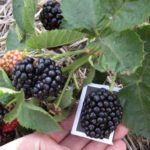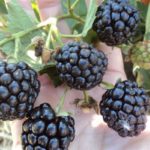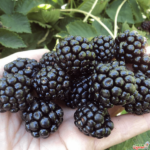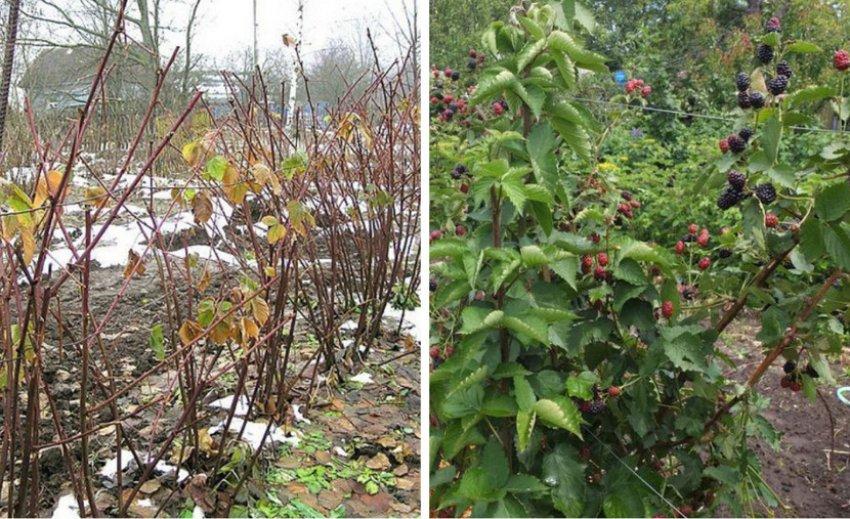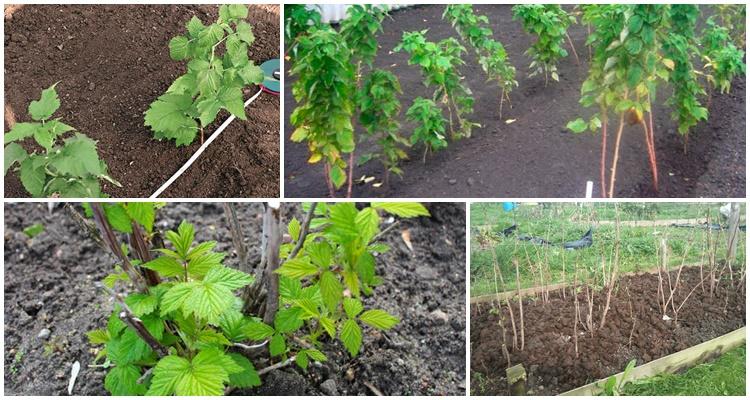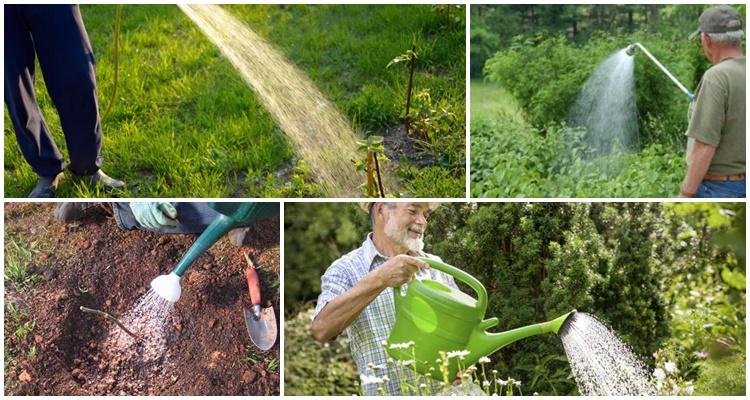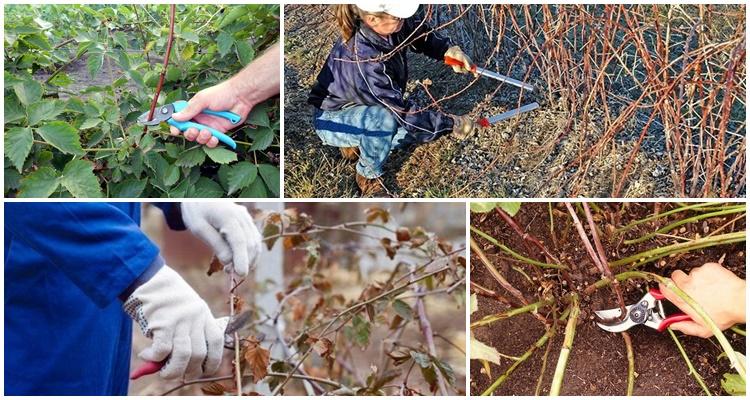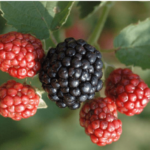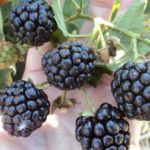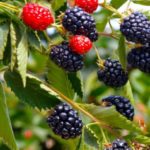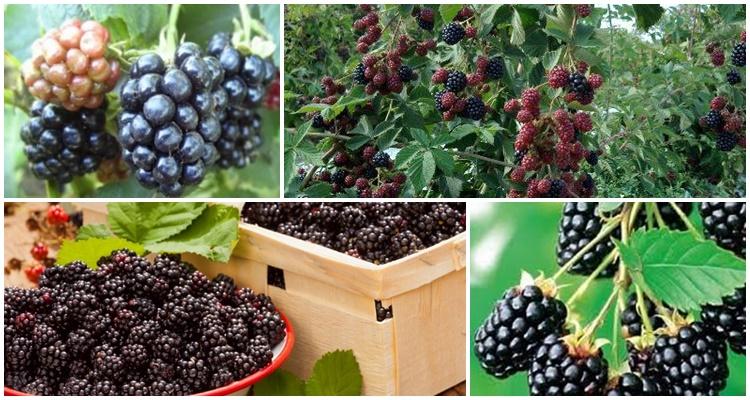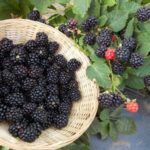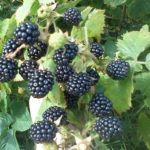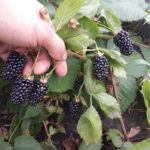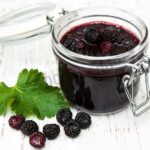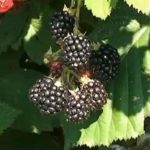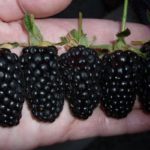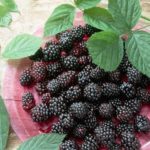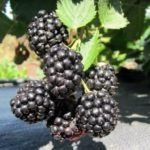Cultivated blackberries, in contrast to the sour and small creeping wild ones, are distinguished by large berries and strong, straight shoots, practically devoid of thorns. Such plants are in demand in home gardens and are bred industrially because the berries are healthy and tasty. The recently released Osage blackberry is a prime example of smart modern breeding.
- History of selection
- Description and characteristics of the variety
- Advantages and disadvantages
- Features of cultivation
- Deadlines
- Selecting a location
- Selection and preparation of planting material
- Planting scheme
- Nuances of plant care
- Watering and fertilizing
- Preparing for winter
- Diseases and pests
- Reproduction methods
- Cleaning and storage
History of selection
Osage blackberries were developed by a team of plant breeders at the University of Arkansas (USA) led by Dr. John Clark. The work took many years; the variety was registered in 2012. Now Osage blackberries are actively spreading throughout the world due to their excellent technical and taste characteristics.
Description and characteristics of the variety
Osage blackberry is a drought-resistant, early-ripening crop with straight, strong shoots devoid of thorns. It has average winter hardiness, withstanding frosts of no more than -13 degrees Celsius.
The berries are large, weighing on average 6 grams, round in shape. They have dense, sweet flesh, colored in a rich purple hue. The yield is high - up to 5 kilograms per plant. Osage blackberries tolerate transportation well, are suitable for fresh eating, and are suitable for freezing and processing.
The bushes are of medium height (up to 170 centimeters) and spreading, the leaves are dark green, jagged, pointed. Pinkish or reddish flowers with a purple tint are medium or large in size. Blackberries are collected in upward-pointing clusters.
Advantages and disadvantages
The advantages of the Osage blackberry outweigh its disadvantages, and its qualities as an industrial crop deserve more attention and distribution of the variety.
Features of cultivation
In order for blackberries to grow well and produce annual harvests, you will need to plant them correctly and provide proper care.
Deadlines
Planting is carried out in the spring, after the beginning of the growing season, but in the southern regions, with a long autumn and early onset of heat, it is better to plant the plant in the fall. This way the Osage blackberry has time to develop strong roots before the cold weather and winters well.
Selecting a location
Osage blackberries require neutral soil acidity and do not tolerate alkaline or calcareous areas. Slightly acidic soils are most suitable for it. Choose a place that is sunny or with light partial shade, not in the sun, but not in deep shade. It is important to protect plantings from cold northern winds.
Selection and preparation of planting material
For planting, take one-year-old plants with two strong shoots, with at least one bud at the base. The root system must be strong, developed, without rotten or dried roots. Before planting, the roots can be dipped in a clay mash.
Planting scheme
14 days before planting, dig holes up to half a meter deep. 50 grams of potassium nitrate and 125 grams of superphosphate and rotted organic matter are added to the pit. On dense soils, you will need to add river sand; to acidify the soil, you can add rotten weathered peat.
Nuances of plant care
An Osage blackberry bush can grow in one place for up to 15 years, and for its full development and fruiting it will be necessary to follow basic care rules. The plant is not capricious, unpretentious.
Watering and fertilizing
Osage blackberries are renowned for their drought tolerance, but generous watering without overwatering during the growing season and fruit formation will result in a bountiful harvest of sweet berries.
You can start feeding the plants 2-3 years after planting. Until then, they have enough nutrients received during planting. In the spring, nitrogen fertilizers (ammonium nitrate) are applied, while the crop is forming - potassium and phosphorus fertilizers, as well as organic matter. Loose, rotted compost or humus performs a triple function - it nourishes, retains moisture in the soil and prevents it from caking and compacting.
Preparing for winter
After picking the berries, the Osage blackberry shoots are untied from the supports and bent to the soil, having previously cut out all the dry and weak branches, and shortened the wintering ones by a third. Remove all debris from the soil surface, including fallen leaves and old mulch. Garbage must be burned.
The soil should be fertilized, dug up and covered with a layer of fresh mulch. This will not only protect the roots from freezing, but will also prevent them from drying out during wintering. The bent shoots are fixed in a round shape, covered with non-woven material, and insulated with spruce branches or straw mats in cold weather.
Diseases and pests
Because Osage is a new blackberry variety, it is healthy and disease resistant. However, it is not recommended to place bushes close to raspberries, since the plants have the same diseases and pests.
The most common diseases are:
- Anthracnose.
- Purple spotting.
- Septoria.
- Gray rot.
- Powdery mildew.
In the presence of fungal diseases, plants are treated with specialized fungicides, taking into account that copper-containing preparations have pronounced toxicity.That is why processing is carried out three times:
- Early in spring, with the beginning of sap flow.
- Before the formation and opening of buds.
- Immediately after flowering.
It is prohibited to spray on ovaries and fruits. Pests (raspberry beetles, bronze beetles, stag beetles, aphids and mites) are destroyed with insecticides such as Decisa, Aktara, Aktellika or Karbofos, carrying out treatments at a time similar to the use of fungicides. The soil under the bushes must be loosened and dug up for the winter.
If viral diseases are detected, the affected plant is dug up and burned.
Reproduction methods
Blackberries are propagated by the following methods:
- Dividing the bush. When transplanting, several young plants with a well-developed root system are taken from the mother plant.
- Root suckers. At the end of spring, strong shoots are dug up and planted without touching the mother bush. To obtain a large number of root shoots, vegetative side shoots are pinned to the ground or buried in shallow trenches. Soon the shoot gives off its own roots, and new shoots develop from the buds.
- Green cuttings. This method is often used to preserve all the qualities of the mother plant. Non-lignified cuttings with one bud and a leaf are cut from it, planted in a greenhouse until roots form, then in a school for acclimatization and hardening. One-year-old plants with strong roots are planted in a permanent place.
One Osage blackberry bush, selected as a queen cell, can become the founder of an entire plantation.
Cleaning and storage
Osage blackberries have properties that those who want to grow and propagate them need to know. The ripening season begins in the last ten days of June.Blackberries ripen unevenly and do not ripen when picked, so they are collected selectively, picking only completely ripe ones. Because of this, harvesting is extended over time.
The fruits are delicate, so they act quickly and accurately. The collected berries are placed in a cool, shaded place, without washing, as they will immediately spoil. This can be done immediately before consumption or processing. In the cold, fresh berries can remain preserved for up to 20 days.
To preserve vitamins, minerals and valuable nutrients, Osage blackberries are best frozen by shock freezing. Two options are used:
- Fresh berries.
- Mashed with added sugar.
Before processing, fruits without stalks are soaked in cold water with added salt to remove any insects, then quickly washed, dried and frozen. These blackberries are good to eat for 3 years. Rub the berries with sugar in a 1:1 ratio. The mixture is packaged in a suitable container and frozen. The shelf life of the product is one and a half years.

